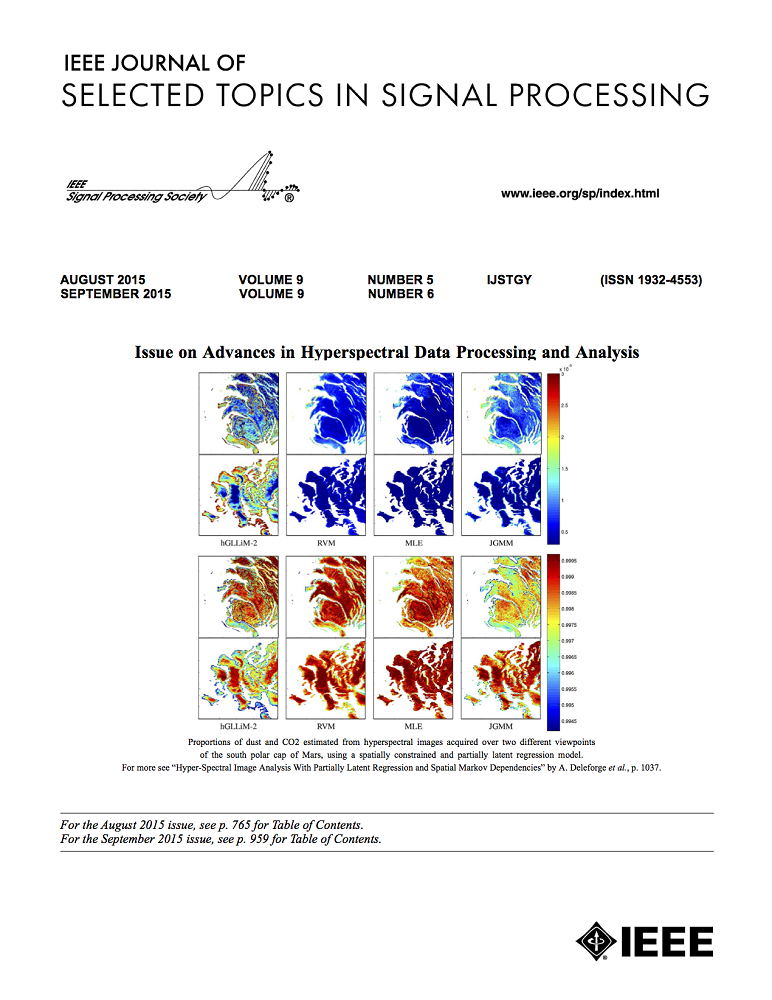用户移动情况下基于 RIS 的 NLoS 近场联合位置和速度估计
IF 13.7
1区 工程技术
Q1 ENGINEERING, ELECTRICAL & ELECTRONIC
IEEE Journal of Selected Topics in Signal Processing
Pub Date : 2024-06-13
DOI:10.1109/JSTSP.2024.3414110
引用次数: 0
摘要
在借助反射式可重构智能表面(RIS)进行单基站(BS)非视距(NLoS)单波段定位的背景下,本文介绍了一种新颖的三步算法,该算法可联合估计移动用户设备(UE)的位置和速度,同时补偿在下行链路(DL)先导符号序列的短传输持续时间内,在 RIS 元件上观察到的近场(NF)多普勒效应。首先,提出了一种低复杂度初始化程序,部分依赖于远场(FF)近似和静态用户假设。然后,设计了一种交替优化程序,以迭代改进速度和位置估计以及信道增益。细化例程利用了小角度近似和 RIS 响应的线性化,同时考虑了 NF 和移动效应。我们通过大量仿真评估了所提算法在信噪比 (SNR)、UE 移动性、不受控多径和 RIS-UE 距离等不同工作条件下的性能。我们的结果表明,与最先进的不考虑移动性的基准算法(SoTA)相比,该算法的性能有了显著提高,同时还表明,所提出的算法在位置和速度估计方面收敛到了各自的理论边界。本文章由计算机程序翻译,如有差异,请以英文原文为准。
RIS-Enabled NLoS Near-Field Joint Position and Velocity Estimation Under User Mobility
In the context of single-base station (BS) non-line-of-sight (NLoS) single-epoch localization with the aid of a reflective reconfigurable intelligent surface (RIS), this paper introduces a novel three-step algorithm that jointly estimates the position and velocity of a mobile user equipment (UE), while compensating for the Doppler effects observed in near-field (NF) at the RIS elements over the short transmission duration of a sequence of downlink (DL) pilot symbols. First, a low-complexity initialization procedure is proposed, relying in part on far-field (FF) approximation and a static user assumption. Then, an alternating optimization procedure is designed to iteratively refine the velocity and position estimates, as well as the channel gain. The refinement routines leverage small angle approximations and the linearization of the RIS response, accounting for both NF and mobility effects. We evaluate the performance of the proposed algorithm through extensive simulations under diverse operating conditions with regard to signal-to-noise ratio (SNR), UE mobility, uncontrolled multipath and RIS-UE distance. Our results reveal remarkable performance improvements over the state-of-the-art (SoTA) mobility-agnostic benchmark algorithm, while indicating convergence of the proposed algorithm to respective theoretical bounds on position and velocity estimation.
求助全文
通过发布文献求助,成功后即可免费获取论文全文。
去求助
来源期刊

IEEE Journal of Selected Topics in Signal Processing
工程技术-工程:电子与电气
CiteScore
19.00
自引率
1.30%
发文量
135
审稿时长
3 months
期刊介绍:
The IEEE Journal of Selected Topics in Signal Processing (JSTSP) focuses on the Field of Interest of the IEEE Signal Processing Society, which encompasses the theory and application of various signal processing techniques. These techniques include filtering, coding, transmitting, estimating, detecting, analyzing, recognizing, synthesizing, recording, and reproducing signals using digital or analog devices. The term "signal" covers a wide range of data types, including audio, video, speech, image, communication, geophysical, sonar, radar, medical, musical, and others.
The journal format allows for in-depth exploration of signal processing topics, enabling the Society to cover both established and emerging areas. This includes interdisciplinary fields such as biomedical engineering and language processing, as well as areas not traditionally associated with engineering.
 求助内容:
求助内容: 应助结果提醒方式:
应助结果提醒方式:


